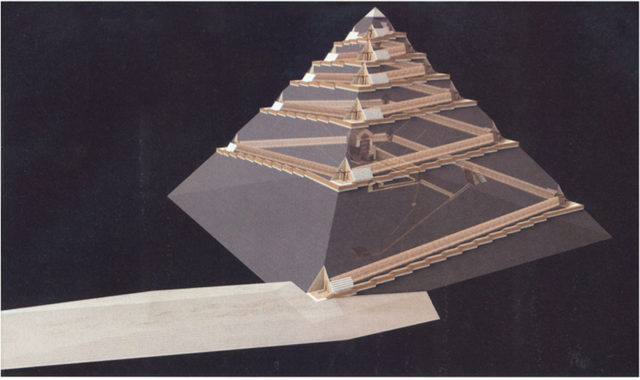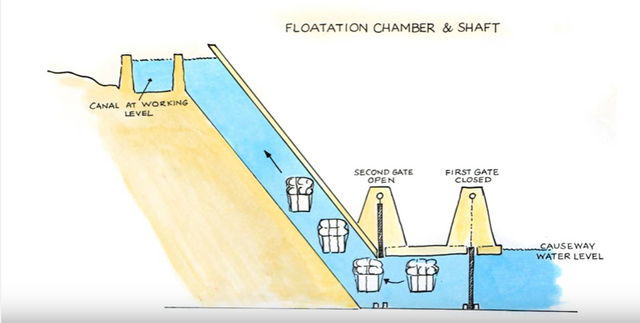The Great Pyramid: Will The New Discovery Validate Any of These Fun, Out-There Theories? (Part 2 of 3)
Thanks to the new chamber recently discover in the Great Pyramid of Giza by the ScanPyramids team using muon technology (which I covered in Part 1), my love of all things pyramids has been re-sparked.
In that first part of this series, I introduced my aim: to discuss the non-mainstream theories connected to the Great Pyramid of Giza. Here, in Part 2, the focus is on how the Great Pyramid may have been constructed.
WHAT IS THE MAINSTREAM CONSENSUS?
This sums up the general, mainstream take on how the stone blocks were moved into place (from livescience):
"Most Egyptologists agree that when the stones arrived at the pyramids, a system of ramps was used to haul the stones up. However, Egyptologists are uncertain how these ramps were designed. Little evidence of the ramps survives, but several hypothetical designs have been proposed over the last few decades."
There you have it... ramps. Case closed, right?
Now, I'm not about to tell you that's 100% wrong but my initial impression, even when I first started reading about the Giza Pyramid, was that this felt a little too basic. If the pyramid itself was so beautifully crafted, planned and executed, might not the construction of it reflect that brilliant feat? Seems logical to me.
So here are two well, thought out theories on how the Great Pyramid of Giza may have been built.
THE INTERNAL RAMP THEORY

Otherwise known as the 'inside-out theory', this was proposed by the French architect, Jean-Pierre Houdin, with some help from his engineer father.
Houdin suggests that the pyramid was built in two stages. The first being an external ramp to get the stone blocks into place for the bottom portion of the structure. The builders then created an internal ramp or tunnel (as seen in the above image) to move the other blocks onto the upper layers.
What's really intriguing about this theory is how it suggests the internal chambers (like the grand gallery) were used as a counter-weight system to pull those massive blocks upward. When watching the following video, you'll discover even more details that add weight to this insightful theory.
[Also, note that in that link from 2011, there's an interesting connection: it's Mehdi Tayoubi, from the ScanPyramids team, who's presenting that video.]
THE WATER SHAFT THEORY

Chris Massey's "water shaft" theory is a little more complex than Houdin's but no less intriguing. It involves an intricate system that utilizes the buoyancy of the blocks in water to get them up the side of the pyramid through a special shaft that would've been later taken down.
Although this theory feels overtly complex, I find it no less fascinating as they did an incredible job with the 3D visualizations to present their theory -- which includes the use of the internal chambers as a pressure release system.
[Note: if you can't get enough of this 2013 video, enjoy their addendum.]
WHAT SHOULD I TAKE AWAY FROM THESE TWO THEORIES?
At the end of the water shaft video, a point is made about how inefficient one massive ramp would've been -- both in the construct and take down of it -- to build the Great Pyramid of Giza. And here we have two ingenious, far more efficient ways to accomplish that relative to the mainstream Egyptologists' simplistic ramp theory.
Although we may never know how exactly the Giza Pyramid was built, Houdin and Massey offer two alternative takes that would've saved time and man power relative to using just a ramp.
Thus, maybe it is worthwhile to keep an open mind to these possibilities and see what kind of further proof may be out there to back them up.
WHAT'S TO COME
So, finally, with the how now discussed, the third part of this series will explore the fun, out-there theories mentioned in the title as to why the Great Pyramid may have been built. So follow me and keep an eye out in your feed as we really start to diverge from the mainstream!
You received a 10.0% upvote since you are not yet a member of geopolis.
To read more about us and what we do, click here.
https://steemit.com/geopolis/@geopolis/geopolis-the-community-for-global-sciences-update-3
If you do not want us to upvote and comment on your posts concerning earth and earth sciences, please reply stop to this comment and we will no longer bother you with our love ❤️